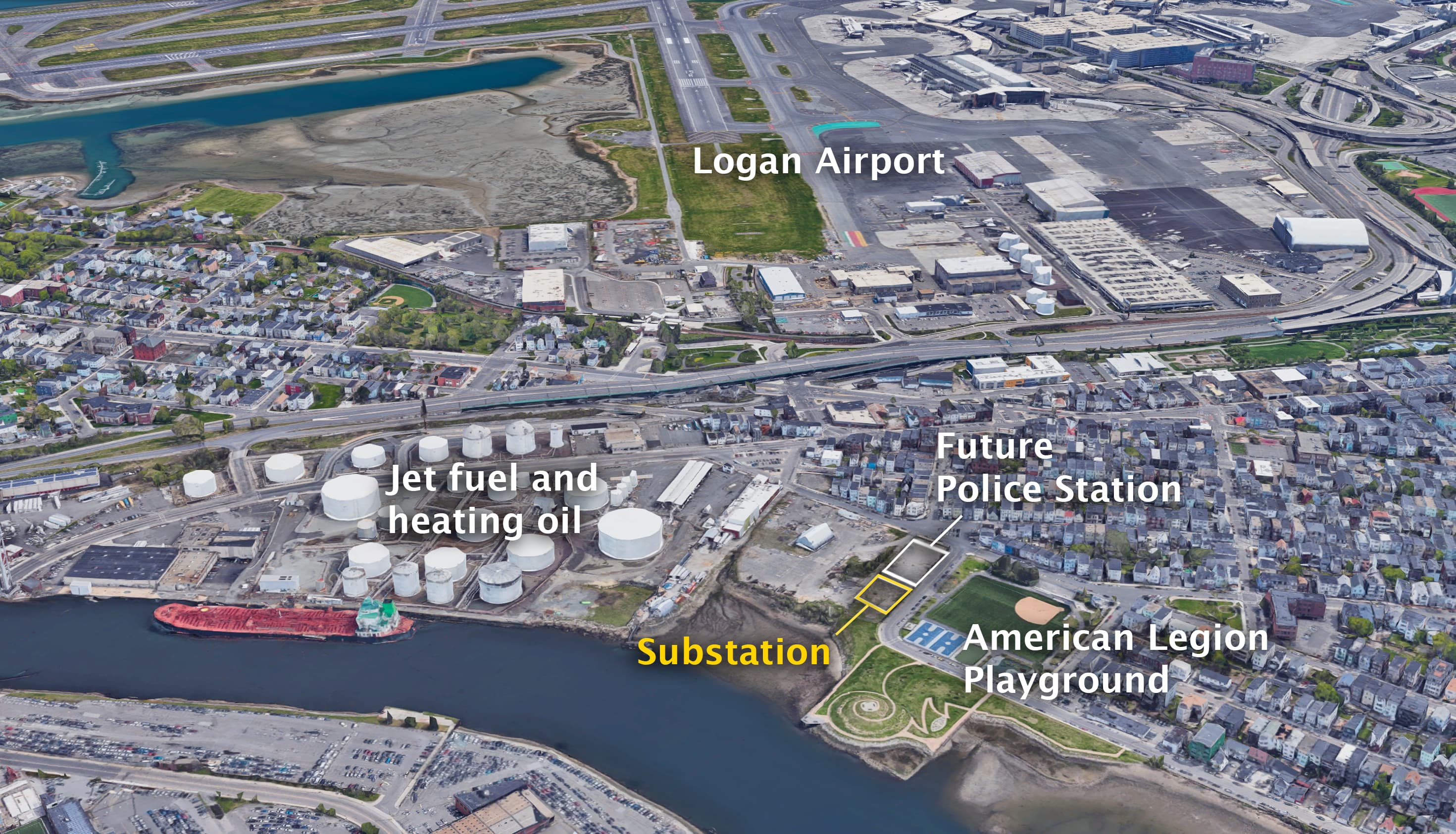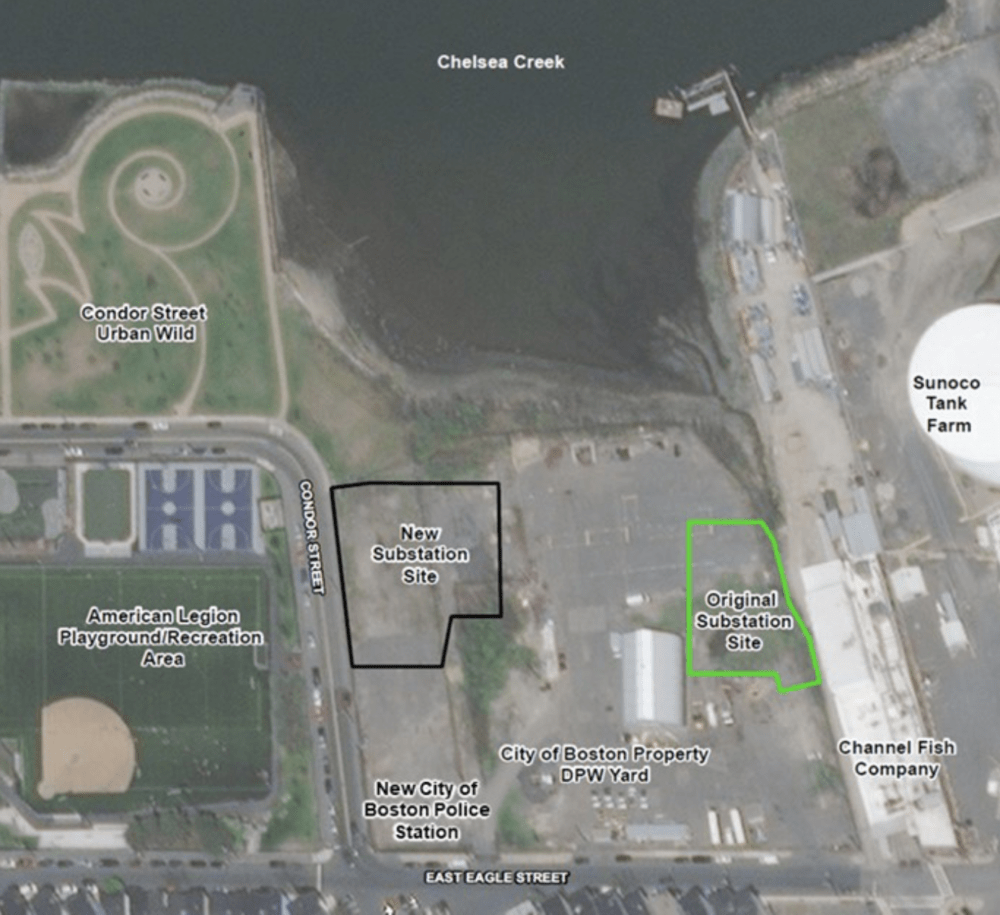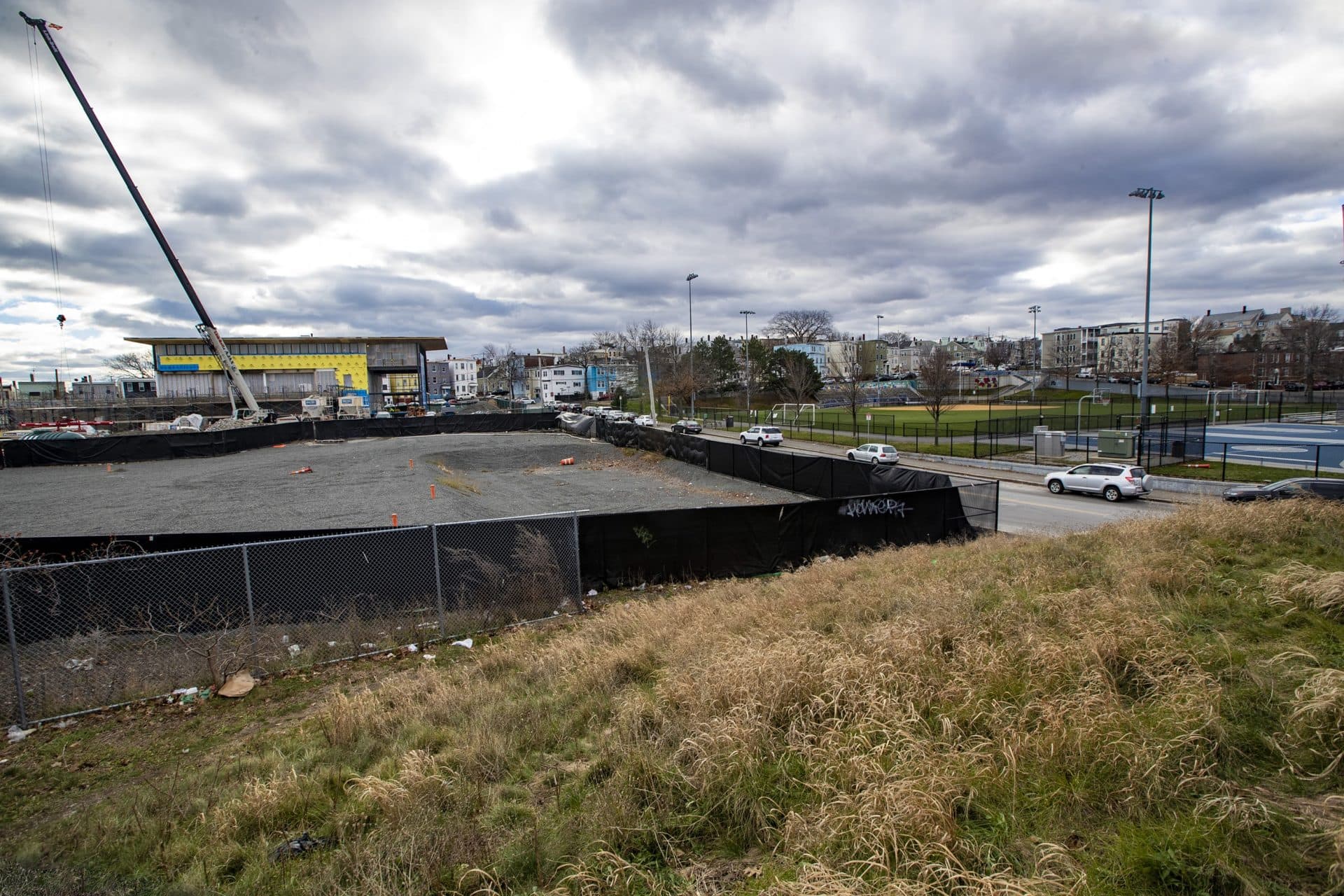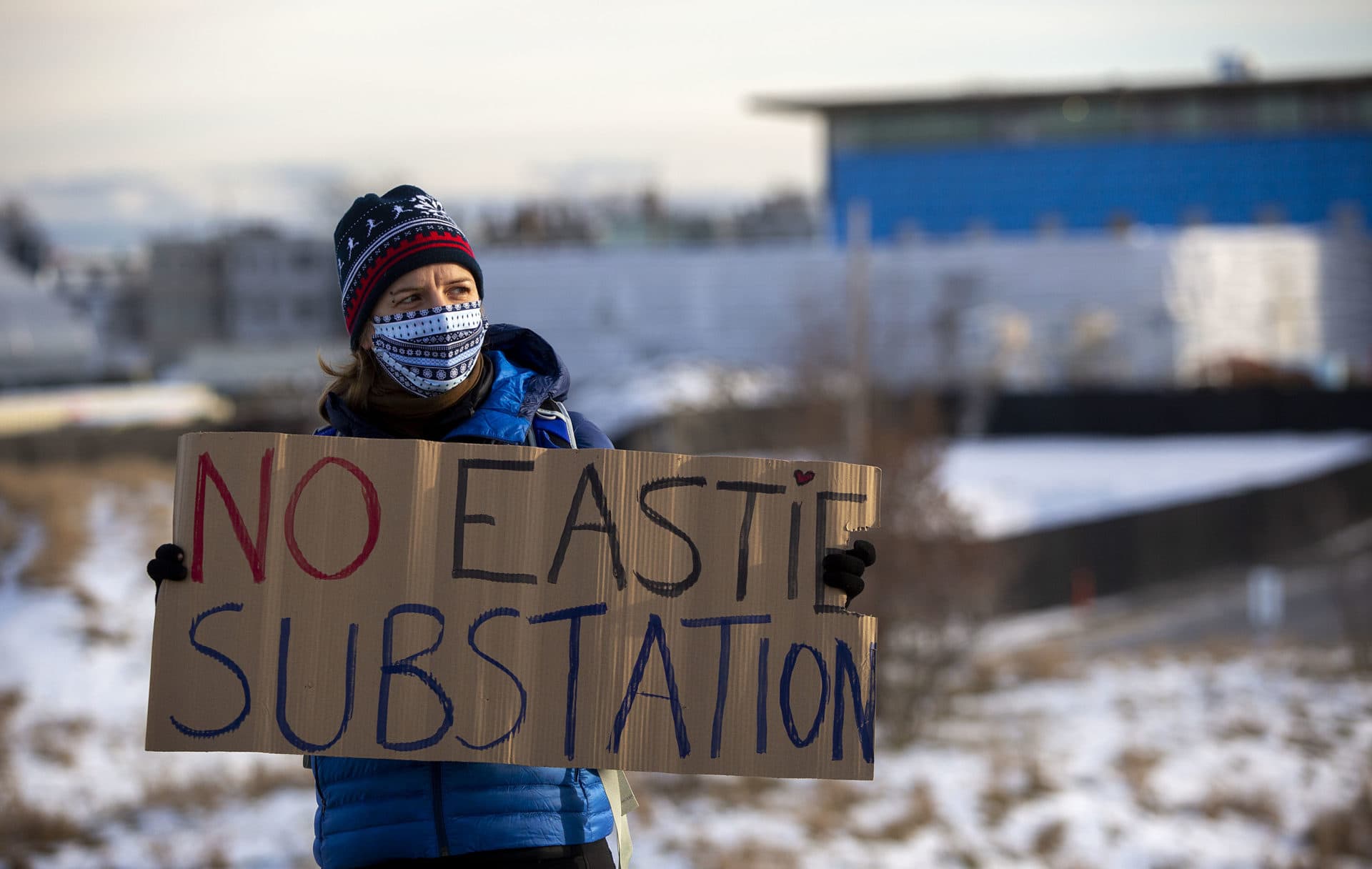Advertisement
In A Blow To Environmental Justice Advocates, State Regulators Approve Controversial East Boston Substation

After years of intense community opposition, the state’s Energy Facilities Siting Board on Monday gave final approval to an electrical substation near Chelsea Creek in East Boston.
The unanimous vote came at the end of almost 20 hours of public meetings during which several high-profile elected officials, and more than 50 members of the public, pleaded with the board to vote no. Speakers raised concerns about public safety, climate change-induced flooding and environmental justice.
Many also asked the board to reconsider whether the substation was needed at all — and if so, why it can't be built at Logan Airport, which they argue is more suitable because it's better protected from climate change, more secure and not near a residential area.
But in the end, the board narrowed its focus to the one question on the agenda: should it allow the utility behind the project, Eversource, to move the proposed substation a few hundred feet to the western edge of the property.

And though the answer was a unanimous yes, the board also approved several amendments requiring things like regular check-ins on the latest climate data, better public safety plans and that Eversource engage with the community to compensate for negative impacts associated with the project — the latter of which project opponents called an "insulting" effort to “buy off the community," noting that if the parties fail to come to an agreement by the end of July 2021, Eversource may proceed with construction anyway.
"The ESFB's decision, while disappointing, is hardly surprising to us. It's pretty much par for the course for them," said John Walkey of GreenRoots, the Chelsea-based environmental nonprofit leading the fight against the substation. "The idea that they are approving a project that adds an additional burden into an already overburdened environmental justice community ... it just seems like a joke for them to be talking about environmental justice and making sure they do right by us with a community benefits agreement."
Advertisement
Walkey said that his group plans to appeal the decision and hopefully argue the case in front of the Massachusetts Supreme Judicial Court.
Boston City Councilor Lydia Edwards, who represents East Boston and has been a vocal opponent of the project, also said “the fight isn’t over.”
"Despite the opposition from countless residents during hours of testimony and elected officials at all levels of government, the EFSB has chosen to put another environmental burden on the East Boston community,” she said in a statement. “I will continue to stand shoulder to shoulder with the activists leading the fight against this injustice."
In a statement, EEA Spokesperson Craig Gilvarg said the vote "is the result of an extensive public and stakeholder engagement process," and includes "unprecedented" provisions requiring Eversource to negotiate an agreement "that offers direct benefits to the East Boston community."
Electrical substations are critical pieces of our energy infrastructure. They convert high-voltage electricity from power plants and other big generators to a lower voltage for distribution to your house. They are all over the state and look like a network of metal towers, latticed structures and wires.
In 2014, the utility Eversource proposed building a substation in East Boston as part of a bigger infrastructure upgrade. The company said the facility was necessary because the substation in Chelsea currently serving the area was at capacity, and the area was rapidly developing and would need more electricity in the future.
Eversource originally proposed putting the facility on the east side of the property, but a nearby fish processing plant raised concerns about electromagnetic radiation from the substation disrupting its sensitive equipment. To address this, in 2017, the EFSB “tentatively approved” Eversource’s proposal but asked the utility to discuss a land swap with the city of Boston so it could move the substation away from the plant.

The city agreed, the land was exchanged, and Eversource submitted a project change proposal in 2018. Though this proposed change is technically what the EFSB has been considering during all these recent public meetings, the fight over whether the substation should be located in this neighborhood at all has dominated the public discussion.
East Boston is a state-designated Environmental Justice Community with a long history of pollution and environmental burdens. It is home to Logan Airport, bisected by multiple highways, and houses all of the region’s jet fuel and most of its heating oil. The proposed substation is in the densely populated Eagle Hill neighborhood and will be constructed on a parcel of land adjacent to Chelsea Creek and directly across the street from a popular playground.
To opponents of the substation, the project has become a symbol of the fight for environmental justice, while also raising deep questions about our climate vulnerabilities and what it means to have a truly inclusive public participation process.
Early on in the siting process, the state did not provide interpretation services for these residents, calling simultaneous interpretation "too disruptive." Since then, GreenRoots and other environmental justice advocates have consistently accused the state of not making the public participation process inclusive and fair, and argued that the state should start the siting process over. Earlier this year, the group also filed a federal lawsuit with the Conservation Law Foundation and Lawyers for Civil Rights against the U.S. Environmental Protection Agency for not investigating whether the state violated people's civil rights.
It was against this backdrop that Secretary of Energy and Environmental Affairs Kathleen Theoharides, and the board’s chairwoman, opened her comments during Monday’s meeting.
“As we know and have heard throughout the course of the meetings, the proposed project we are deliberating on today will be located in a heavily industrialized area within an environmental justice community that has historically suffered disproportionate environmental harms and a heavy burden of infrastructure,” she said. “This context has weighed heavily on my mind … and there's no question that now is a time for policymakers to seriously consider the prior injustices of how and where our infrastructure has been sited.”
The siting board is tasked with balancing the need to provide reliable and affordable electricity with the environmental impact of such infrastructure, she continued, noting that the recent power outages in Texas serve to remind us how important electricity is to our daily lives and a functioning society.
“We've seen how disruptions in essential resources, such as electricity and natural gas, can quickly and directly impact public health and safety, and even become life threatening,” she said.
To that end, Theoharides and other board members discussed and voted on amendments that would require Eversource to involve the community more directly and engage in conversations about what could be done to help mitigate the impacts of the substation.

After a lengthy discussion about the both of these topics, a lawyer for GreenRoots, Josh Daniels, chimed in and told the board that his client “doesn’t see much value” in engaging in these discussions.
"You all sat here and listened to hours upon hours of community members saying exactly what they wanted, which was to not site the substation where it’s been proposed. And either convince us that it’s needed at all or explain why it’s not being sited in a more suitable location such as the airport,” Daniels said. “And frankly, if you really think that the community’s opposition is going to be mollified by, for example, getting us in a room together and talking about what the thing is going to look like … that doesn’t correlate with either reality or with our vision of environmental justice.”
